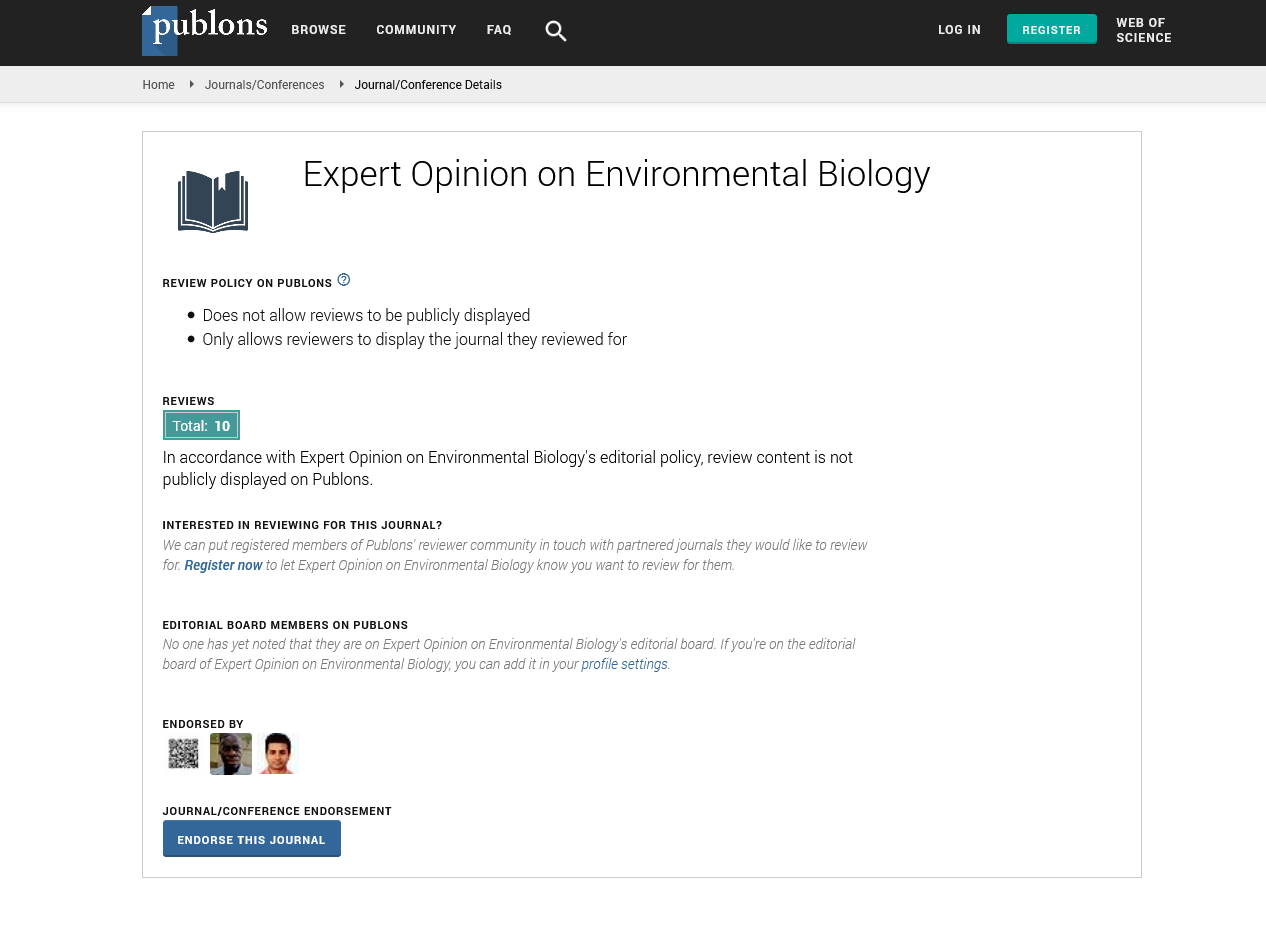Indoor air pollutants (PM2. 5 y BC) in rural homes of people with disabilities
Leonel A Martinez Vallejo, John Benavides, Mario Hernandez and Luis C Belalcazar
Universidad Nacional de Colombia, Colombia
Universidad EAN, Colombia
: Expert Opin Environ Biol
Abstract
Black carbon (BC) has recently been considered as a major air pollutant and as a short-lived climate pollutant. The BC remains in the atmosphere only for a few weeks, so the reduction of its emissions would immediately diminish its impact. Particular matter is one of the main pollutants monitored, to define air quality; this is emitted by natural sources or anthropogenic activities. In this study, Particular Matter (PM2.5) and Black Carbon (BC) are determined and the emission sources are identified in homes of a rural area of Bogota, Colombia. The methodology is based on: evaluation of socio-demographic information and environmental factors of households in which at least one person lives in a disability or related illness; continuous monitoring of PM2.5 and BC for 72 continuous hours in 21 households and daily records of activities inside the home and external events. As results, the main sources of emission are stoves with firewood fuel. In PM2.5 concentrations, statistically significant relationship was found with: environment type, fuel type and hours of stove usage. The highest concentrations were found in homes that use biomass (firewood), the 24 h PM2.5 average concentrations were from 16.8 to 1250 μg/m3. In the case of BC concentrations, statistically significant relationship was found with: environment type and fuel type. There was found higher average concentrations in a range from 1.3 to 51.0 μg/m3 in homes where they cook with firewood than in houses that use gas (0.6 to 3.8 μg/m3). In 58% of households, the WHO guidelines are exceeded (25 μg/m3 at 24 h average), representing a high risk for people who live in the house, especially in households that use firewood as fuel in one-environment. Currently, work is being done to use, in this zone, cleaner fuels in order to reduce the emission of pollutants.
Biography
E-mail: lamartinezv@unal.edu.co
 Spanish
Spanish  Chinese
Chinese  Russian
Russian  German
German  French
French  Japanese
Japanese  Portuguese
Portuguese  Hindi
Hindi 
